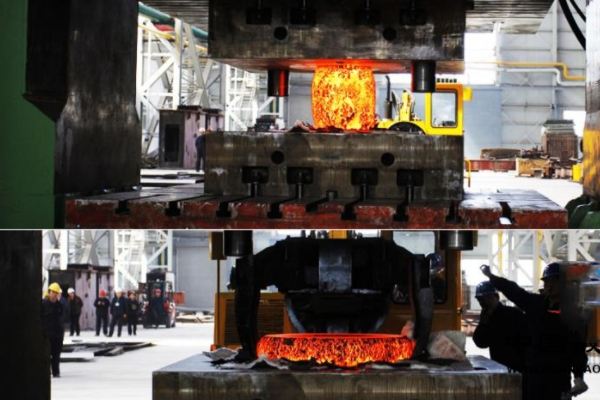Hot forging is the forging of metal above the temperature of recrystallization.
Increasing the temperature can improve the plasticity of the metal, is conducive to improving the internal quality of the workpiece, so that it is not easy to crack. High temperature can also reduce the metal deformation resistance, reduce the required tonnage of forging machinery. But hot forging process, workpiece accuracy is poor, the surface is not smooth, forging easy to produce oxidation, decarburization and burning loss. When the workpiece is large and thick, the material strength is high and the plasticity is low (such as the rolling of the extra thick plate, the drawing length of the high carbon steel rod, etc.), hot forging is used. When the metal (such as lead, tin, zinc, copper, aluminum, etc.) has enough plasticity and the amount of deformation is not large (as in most stamping processing), or the total amount of deformation and the forging process used (such as extrusion, radial forging, etc.) is conducive to the plastic deformation of the metal, often do not use hot forging, but use cold forging. The temperature range between the initial forging temperature and the final forging temperature of hot forging should be as large as possible in order to achieve as much forging work as possible by one heating. However, high initial forging temperature will lead to excessive growth of metal grains and the formation of overheating, which will reduce the quality of forging parts. When the temperature is close to the melting point of the metal, the low melting point material melting and intergranular oxidation will occur, resulting in overburning. Over-burned billets are often broken during forging. The general hot forging temperature is: carbon steel 800 ~ 1250℃; Alloy structural steel 850 ~ 1150℃; High speed steel 900 ~ 1100℃; Commonly used aluminum alloy 380 ~ 500℃; Titanium alloy 850 ~ 1000℃; Brass 700 ~ 900℃.
Cold forging is lower than the metal recrystallization temperature of forging, usually referred to as cold forging at room temperature, and will be higher than room temperature, but not more than the recrystallization temperature of forging is called warm forging. The precision of warm forging is higher, the surface is more smooth and the deformation resistance is not big.
The workpiece formed by cold forging under normal temperature has high precision in shape and size, smooth surface, few processing procedures and easy to automate production. Many cold-forged and cold-pressed parts can be directly used as parts or products without the need for cutting. But in cold forging, because of the low plasticity of the metal, it is easy to crack during deformation, and the deformation resistance is large, so large tonnage forging and pressing machinery is needed.
Post time: Apr-02-2021

